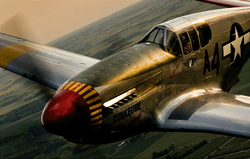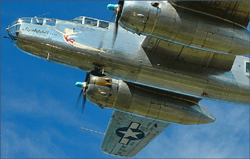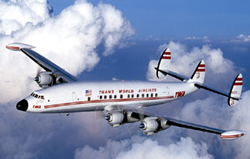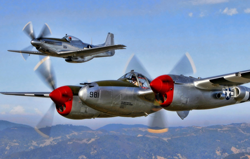Constellation

Manufacturer: Lockheed Corporation
Primary Role: Transport
- Description:
- Specifications:
Beginning in 1937, Lockheed Corporation began working on the L-044 and L-049 Excalibur projects, which strove to develop a 40-passenger long-range airliner. As the United States entered WW2, the aircraft being constructed were conscripted for US Army service. The first aircraft took flight on 9 Jan 1943, and the first example was delivered to the US Army Air Forces later in the same year. Designated C-69 Constellation, they were mostly used as long-range personnel transport aircraft during the war. 22 were built between 1943 and 1945; only a few of them remained in civilian hands during that time. There were plans to develop a bomber variant to the design, but it was eventually scrapped.
On 17 Apr 1944, aviators and industrialists Howard Hughes and Jack Frye piloted a Constellation aircraft from Burbank to Washington DC, United States; the 6-hour 57-minute flight broke the record at the time. On the return flight, they picked up aviation pioneer Orville Wright as a passenger, which would prove to be his final flight.
After the war, on 1 Oct 1945, the airline company Trans World Airlines (TWA) became the first commercial organization to operation a Constellation aircraft. The first flight departed Washington DC, United States on 3 Dec 1945 for Paris, France, arriving on the following day, while regular trans-Atlantic service began on 6 Feb 1946. On 17 Jun 1947, Pan American World Airways became the second company to operation the model, using Constellation aircraft for its around-the-world schedule. Many commercial airliners would go on to operate Constellation aircraft successfully. Between 1 and 2 Oct 1957, a TWA Constellation aircraft flew from London, England, United Kingdom to San Francisco, California without any stops in 23 hours and 19 minutes; this remains the world record for the longest-duration non-stop passenger flight.
The last Constellation passenger aircraft was retired from service on 11 May 1967, having been made obsolete by jets. Many, however, would remain in freight service.
Over the design's production life, 856 examples were built.
Length: 29.01 m
Height: 7.21 m
Powerplant: Four Wright R-3350-35 Cyclone 18 radial engines rated at 2,2
Cruising Speed: 483 km/h
Maximum Speed: 531 km/h



